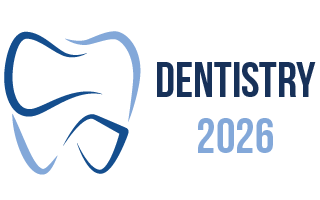3rd European Conference on
Dentistry and Oral Health
May 20-21, 2026 | Barcelona, Spain

Address: Avinguda Del Maresme 78 Ronda De Dalt Exit 15, 08940 Comellà de Llobregat, Barcelona, Spain
Dentistry 2026

University Dentistry Clinical Centre of Kosovo, and Alma Mater Europaea, Campus College Rezonanca, Europe
Abstract:
The rapid evolution of digital technologies has profoundly reshaped the landscape of prosthodontics, bridging the gap between innovation and everyday clinical practice. From intraoral scanning and computer-aided design/manufacturing (CAD/CAM) to artificial intelligence and 3D printing, digital solutions have enhanced diagnostic accuracy, streamlined workflows, and expanded treatment possibilities. These advancements not only improve precision and efficiency but also contribute to greater patient satisfaction by enabling customized and predictable outcomes. Moreover, the integration of digital tools fosters collaboration between dental professionals, dental technicians, and industry partners, leading to more cohesive and cost-effective treatment planning. However, the adoption of these technologies also presents challenges, including financial investment, the need for continuous professional training, and considerations regarding data security. As prosthodontics moves deeper into the digital era, the balance between technological innovation and practical implementation remains central to advancing patient care. This abstract explores how digital dentistry is transforming prosthodontics, highlighting current applications, emerging trends, and the implications for the future of clinical practice
Biography:
Dr. Venera Bimbashi is a prosthodontist and academic with extensive expertise in clinical prosthodontics and oral rehabilitation. She obtained her Ph.D. from the University of Zagreb in 2015 and has been active in academia since 2009. Currently, she serves as Associate Professor and Program Leader of Dentistry at Alma Mater Europaea College, Campus Rezonanca, Prishtina. Dr. Bimbashi has published extensively in peer-reviewed journals, contributing to research on quality of life and innovations in prosthodontics. Through her integration of clinical practice and academic leadership, she advances evidence-based dentistry, fosters innovation, and remains committed to delivering patient-centered prosthodontic care
